Ketogenic Diet Plan
Updated July 19, 2020 - Medical review by Curtis Lee Songster, MD
A ketogenic diet plan can help you regain your health! Following a keto diet causes your metabolism to switch from burning sugar to burning fat and ketones as a primary body fuel. When your metabolism switches from fueling itself with the sugar from carbohydrates to using fat-based fuels and fat-derived molecules called ketones, positive changes at a cellular level occur, and this translates into better overall health.
A metabolic process called ketogenesis and a body state called ketosis are responsible. Ketosis is simply a normal metabolic pathway in which body and brain cells utilize ketones to make energy, instead of relying on only sugar (i.e., carbohydrate). In fact, human beings evolved the ability to burn ketones as an adaptation to times when food was scarce. This state of "nutritional ketosis" has allowed the human race to survive over millennia through all kinds of famine and other tough living conditions.
So, it's no surprise that being in nutritional ketosis is a beneficial body state, and as nutritional researchers start to let go of the detrimental "fat is bad" dogma, a great deal of research is being done on ketosis as it relates to disease. Ketone bodies themselves are beneficial, and have been shown to alleviate many disease conditions through improvement of cellular energy pathways and mitochondrial health. Ketogenic diets are now being used to treat medical conditions such as diabetes, epilepsy, autism, Alzheimer's, cancer and others, and much of the success of these treatments is rooted in these cellular effects.
This page will answer many questions you may have about a ketogenic diet plan including:
- Who should NOT follow a ketogenic diet: list of medical contraindications.
- How do I start a ketogenic diet plan?
- Do I need to worry about the "dangers of low carb diets"?
- What are the side effects of a ketogenic diet?
- What are the benefits of a ketogenic diet?
But first a little legal and medical coverage: Although I have a Master's degree in Applied Clinical Nutrition, I am not a physician. I do have extensive experience with eating the ketogenic way, and I improved and reversed many of my health problems with a ketogenic diet. I am not guaranteeing that this diet will work for you or resolve your health problems. I am just sharing what I know about ketogenic diets. Click here for the full legal disclaimer.

Note of Caution
You should check with your physician if you have any concerns about starting a ketogenic diet plan with pre-existing health conditions, especially if those conditions involve kidney or heart problems. People with kidney disease should definitely consult with their physician about starting a ketogenic diet. Other contraindicated conditions and health issues are listed here. I've also written a page for people who have no gall bladder here. Make sure you read this information before starting the diet.
However, ALSO be aware that most doctors get very little training on general nutrition and don't take into account or understand the effect of food on the body. They are also taught that ketosis is dangerous, and they get no training at all on ketogenic diets. Hence, if you ask your physician about this diet, you may get push back and a scary "ketosis-is-dangerous" sermon.
Keep in mind that the doctor is confusing "nutritional ketosis" with a much more dangerous condition called ketoacidosis. These are two different conditions. Ketoacidosis is mostly a concern for Type 1 diabetics and others whose bodies are unable to make or process insulin correctly.
Ketoacidosis usually develops when a person with type 1 diabetes develops an serious infection, has a heart attack or other debilitating illness. It is accompanied by dehydration, high blood sugars and is precipitated by the inability of the sick patient to administer proper amounts of injected insulin. It's unlikely that people who have a working pancreas and blood insulin levels would develop ketoacidosis, as insulin regulates the liver's biochemical process of making ketones.
For people who are interested in using a ketogenic diet as cancer therapy, please utilize the Fight Cancer with a Ketogenic Diet book I have written for this specific purpose. There are some important differences between the ketogenic diet for cancer therapy, and a "regular" ketogenic diet for other issues.
Now back to our regularly scheduled program...
Ketogenic Diet Basics
There are many ways of implementing a low carbohydrate, ketogenic diet plan but most involve following a higher fat, moderate protein, low carb food plan. (The Atkins diet is one of the most famous ketogenic diets, but certainly not the only one). Many people think of ketogenic diets as high protein diets but this is incorrect. As far as calorie percentages go, ketogenic diets are higher in fat, and moderate in protein.
There are differences in how most people view low carb diet plans and a ketogenic diet plan, and these differences center around the amount of carbohydrate and protein allowed on a daily basis:
- Carbs: A ketogenic diet plan requires tracking the carb amounts in the foods eaten and reducing carbohydrate intake to about 20-60 grams per day. For some people, less than 100 grams per day may work, but this level of carb intake is too high for most people to achieve ketosis.
- Protein: In addition, the daily protein requirement should be driven by your ideal body weight or lean body mass. Protein intake also depends on height, gender and the amount of exercise done. It should not be factored on percentage of calories, especially when calories are restricted.
- Fats: The balance of daily calories after calculating carbs and protein requirements will be from fats. Designing a ketogenic diet plan with these guidelines will most people go into ketosis and stay in that state. NOTE: If your goal is fat loss, pay attention to your fat intake. Be aware that overeating fat can interfere with weight loss. The idea is to force your body to burn stored body fat for fuel instead of fat from the diet.
- Calories: The nutrient intake on a ketogenic diet of normal calorie amounts typically works out to about 65-75% of calories from fat, 20-30% from protein, and 5-10% from carbohydrate on a daily basis. However, again, these ratios don't work well at very low calorie or very high calorie daily totals. And although calorie counting is not required, it is important to understand how macronutrient percentages can be affected by caloric intake, so you may want to read my page on calorie counting to get more information on this subject.
- Again, low or very high calorie intake will skew the percentages of macronutrients. It is also important to remember that fats are super high-calorie foods, especially if you have extra weight to lose and you are doing keto to lose weight. Read my plateau page if you are not reaching your weight loss goals.
The key to correctly implement a ketogenic diet plan is to plan your macronutrients for your individual needs. My free, downloadable keto diet plan (in PDF) tells you how.
Set your protein amount based on your ideal body weight or lean muscle mass, using a formula of 1.0 to 2.0 grams/kg lean body mass, and set your carb amounts below 60 grams to start. Fats would make up the balance of your calories. And again, note that a keto diet plan should be individually driven, as detailed in this excellent post from the Optimizing Nutrition blog.
How to Start A Ketogenic Diet
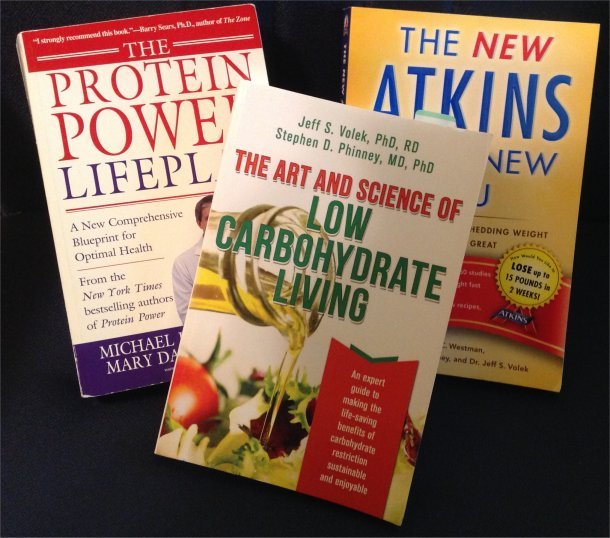
Although this website contains all the information you need, there are also several books which explain the science behind ketogenic diets as well. They were my "go to" sources and I recommend that you get one or two and read them. The bottom line here is to make sure to understand everything that will happen when carbohydrate intake drops.
Ketogenic diets are very, very powerful, metabolically speaking and this is especially important if you take any kind of medication for blood pressure, diabetes, cholesterol or triglycerides. The dosage of these medications will need to be sharply reduced while on a ketogenic diet to avoid negative effects such as excessively low blood sugar or blood pressure.
These books and websites are highly recommended:
- The Art and Science of Low Carbohydrate Living: An Expert Guide to Making the Life-Saving Benefits of Carbohydrate Restriction Sustainable and Enjoyable by Dr. Jeff Volek and Dr. Stephen Phinney
- New Atkins for a New You: The Ultimate Diet for Shedding Weight and Feeling Great by Dr. Eric Westman, Dr. Jeff Volek and Dr. Stephen Phinney
- Dr. Atkins' New Diet Revolution, Revised Edition by Dr. Robert Atkins
- The Protein Power Lifeplan by Drs. Michael and Mary Dan Eades
If you are diabetic or fighting cancer, consider buying one of my books appropriate to your health condition. Each book contains more detailed information about ketogenic diet plans geared toward managing these diseases.
For another science-based resource on ketogenic diets, I highly recommend visiting the site that Raphael Sirtoli and his team over at Break Nutrition have put together. They have good content about low carb and ketogenic diets, and they offer more information on how to kick-start a ketogenic diet, measure your ketones and there's a great post on the benefits of ketogenic diets for inflammation.
Download a Free Ketogenic Diet Plan
Once you have a good understanding about the diet and are ready to start, download my Basic Ketogenic Diet Plan (the plan is in PDF format, so you need Adobe reader to open it).
My plan provides step-by-step instructions on how to determine your custom and specific macronutrient levels (the amount of fat, protein and carb that you should eat given your physical characteristics).
Also, I recommend that you follow the tips below to get prepared for a successful start:
- Get a carb counter guidebook to help learn and remember the carb counts of the foods being eaten. Counting carbs is a critical part of the program, and it's important to understand how to do this correctly.
- Go on a carbohydrate sweep. Inspect kitchen cupboards and refrigerator and remove all of the high carb foods. This includes any whole grain "complex carbs" and most processed foods.
- Restock the kitchen, so that the foods on this low carb food list are available. This will help keep you on the path, grasshopper, and out of the cookies. Here's a low carb grocery list to help with food shopping.
- A ketogenic diet plan is not a "special diet" that requires special foods. There is no need to buy any "low carb" packaged foods. Ketogenic foods are essentially just real, whole foods which are close to their natural state. In other words, they are not highly processed. The only exception to this is the category of artificial sweeteners. These are highly processed. However, I think these are important to include in a low carb diet plan, because a small amount of fake sweetener has less of a negative effect on health than the standard amounts of sugar in sweetened foods. Some people may prefer more natural sugar alcohol sweeteners, but studies have shown these are "antiketogenic" and can derail the process of ketosis for some. They effect each person differently, so you'll have to test to see if they effect your health or weight loss goals.
- Be prepared to spend more time in the kitchen. This is an important point. A ketogenic diet menu involves cooking and eating real foods. If you don't know how to cook, this would be a good time to learn about cooking in general and specifically low carb cooking.
- Think about your meals, and how you will plan them. This will help in buying the right foods at the grocery store, and give a framework to follow when meal time arrives. If you know you're supposed to have salmon and broccoli for dinner tonight, it makes it a lot easier to avoid choosing the old high-carb foods you used to eat.
- Replace old habits with new ones. If you're used to hitting the coffee place for a bagel, start making coffee at home, and have it with the eggs instead.
- Avoid the foods on this list of high carb foods. These are the foods that drive up your blood sugar and insulin levels. In addition, cereal grains like wheat are toxic for more people than is widely known. I personally think that most people with diet-related health issues have an untreated gluten intolerance.
- Stay hydrated. As carb intake is lowered, your kidneys will start dumping excess water that is being retained to store glucose as glycogen. Make sure to drink enough water to replace what gets lost. The old 6-8 glasses is a good rule, I guess, although just drinking to thirst will probably do the trick. If you find yourself getting headaches and muscle cramps, you need more water, and more minerals such as salt, magnesium and potassium, because the water loss also takes minerals with it. (See my low carb diet side effects page for more info).
- Consider taking these natural supplements. I recommend them for the specific issues I discuss on my low carb diet side effects page.
- You may also want to buy some Ketostix Reagent Strips so that you can check to see if you are in ketosis for the first few weeks. However, after the first 3-4 weeks on the plan, the goal is to become "keto-adapted". Once adapted, the body should be burning the ketones for fuel. The stick shouldn't register as deep purple if you are using the ketones as a fuel source. And they now have blood ketone meters available to track blood ketones at home. This is a much more accurate way to track your individual ketone levels. See my ketosis page for more information.
- Find some way to track daily food intake and carb counts. Keep a spreadsheet, use one of the online food intake trackers (cronometer or myfitnesspal), or simply write it down in a journal. Not only will journaling help you stay on track carb count wise, you'll want to have a record of the foods you are eating, how you felt and the changes you make so that if you go off track, you can look back and see what worked for you. This is a good place to track ketone levels as well. I've created a free printable food diary for you to use. The Atkins website also has some nice tools for tracking your progress on a ketogenic diet plan. And this database is an excellent resource for food information.
- Think about any social situations that will be encountered, and devise ways to handle those times when temptations to eat the "old" way will be high. You don't want to be blind sided when someone at the office brings in a box of your favorite chocolates and puts them right under your nose. Likewise, a beer with your friends usually turns into a date with potato skins and nachos. Think salad and steak instead.
- Even if you are starting a ketogenic diet plan for weight loss purposes, don't focus on your weight. Don't weigh yourself every day. Your weight can vary between 2-4 pounds each day because of changes in water intake and absorption. You won't be able to track any fat loss accurately on a daily basis, and the fluctuations will make you crazy if you focus on them. Instead, weigh yourself once a week, or keep track of your body measurements to track your progress. Better yet, focus on the health benefits and the long term health changes that come with eating a low carb diet. Knowing that you are greatly improving your health is a powerful reason to stay with a ketogenic diet plan, even if you don't lose any weight. I discuss in more depth the health benefits of a ketogenic diet in this article published in the July/August issue of the Well Being Journal. I recommend getting a health check up and a blood panel test done just before starting the diet, so that you can track the effect of the change in your eating habits on your cholesterol, blood pressure, and other health markers. Four to eight weeks later, you can get another blood test done and see if there are improvements.
- Learn how to stop sugar cravings. There are supplements and techniques that can help you overcome those nagging thoughts of dessert and get your blood sugar under control. As time passes, you'll find that ketosis is a powerful appetite suppressant, so it should get easier to abstain the longer you follow a ketogenic diet.
- If you are using keto to address a health issue, don't be afraid to eat more fat, or saturated fat. Also pay attention to the types of fats you eat on a ketogenic diet plan. Choosing natural fats such as butter, coconut oil, ghee and olive oil over seed based vegetable oils (canola, sunflower) is recommended.
- For those trying to lose weight, make sure your fat intake is not causing you to eat more calories than you use.
- Rethink the heavily-promoted idea that vegetables and whole grains are the healthiest foods to eat. They are not. Animal foods offer greater amounts of more easily-absorbed nutrients and vegetables and grains contain many natural toxins. I'm not saying don't eat vegetables, they do provide benefits. I am saying give up the grains. The negative effect of these foods outweighs any nutritive value they have. If you are not sure that grains are affecting your health, go look at my pre-diabetes page and see if you say yes to any of the points on the symptoms list.
Fallacies and Fears: Is a Ketogenic Diet Dangerous?
The "dangers of low carb diets" are really just myths told by people who have a limited understanding of how low carb diets work.
The main criticisms include fears about fat intake and the process of ketosis. The argument over whether saturated fats are healthy or unhealthy has been settled in the research literature (they are not, but can be if you eat them alongside a high carb intake).
If you need more info on the saturated fat debate, there are several good books to read on this subject. For more information about the type of fats to eat, see the saturated vs unsaturated fats page.
- Fears about fat: Most people have trouble on a ketogenic diet plan because they are scared to increase the amount of fat they eat, especially saturated fat. The message that fat is bad has been pounded into the collective American consciousness for the last 30 years. It's hard to unlearn the message that fat makes you fat, and saturated fat especially is very bad for you. I understand that message has been repeated over and over, but it is a lie.
Here's the reality: A high carb diet drives up blood sugar and insulin levels. All that sugar and insulin are inflammatory. The standard American diet offers lots of foods that are high sugar AND high in saturated fat, and in studies, these two factors were lumped together. So although the latest research shows that saturated fat consumption is not at fault, it got the blame for the inflammation that causes heart disease because it was studied in combination with a high carb diet. A ketogenic diet plan which is high in saturated fat and very low in carbohydrate will REDUCE inflammation. (Reference here.)
- Saturated fat is not harmful in the context of a low carb diet. This study from Johns Hopkins Medical School confirms this. The ketogenic diet plan is healthier because the higher saturated fat intake increases your HDL cholesterol, and at the same time, a lower carb intake decreases your triglycerides levels. These two factors are the major markers for heart disease, and the closer your triglyceride/HDL ratio is to 1, the healthier your heart. In reality, the cause of heart disease is a chronically high carbohydrate consumption, not a high saturated fat and cholesterol intake. I think the best way to learn this is to get a full blood test before you start a ketogenic diet plan, then do the diet faithfully for 3 months. Then have your blood work checked again. You'll see the difference and discover how much better you feel.
- Some people don't do well in ketosis. As I mentioned above, you should check with your physician if you have any concerns about starting a ketogenic diet plan with pre-existing health conditions, especially if those conditions involve kidney or heart problems. Although there is evidence that many people do well with reducing carb intake, I don't recommend going much lower than 10-20 carbs per day. The ketogenic is a very low carb diet, but it is not a zero carb diet. If you find (after at least a month on the diet) that you are one of the people who doesn't feel well at very low carb levels, adding enough carbohydrate in the form of sweet potatoes and other starchier vegetables back into your diet should bring you out of ketosis and resolve the issues. If you stay away from grains and rely on vegetables, a moderately higher carb content (60-100 grams/day) should result in health benefits. You won't be in ketosis of course, but still, you should feel better. (I think grain consumption is one of the root causes of illness, but also acknowledge that everyone is different.)
- Some people have a genetic predisposition to a higher cholesterol level on keto. If your cholesterol levels get really high (over 300) on a keto diet, you may be one of these "hyper responders." One solution is to cut back on saturated fat, and use more olive oil. There's a good video about the causes and fixes for this phenomena here.
General Side Effects
Switching to a ketogenic diet plan can be uncomfortable at first because your body metabolism is refitting itself to burn fat instead of relying on glucose. However, you can avoid most of the symptoms. Here's a list of all of the common side effects that will happen the first week or so of starting a ketogenic diet plan. Knowing about them allows you to take steps to minimize them, and save yourself some carb withdrawal misery. Dr. Mike Eades has a great analogy for this process in this blog post. I highly recommend you read it.
Pay Attention to This Side Effect...
I want to give special mention one of the side effects of carb withdrawal because it can really be scary if you don't know what it is. During the first week or so of cutting your carb intake, your blood sugar levels will fall, and you may experience a mild insulin overload. It can result in reactive hypoglycemia, or low blood sugar. This usually happens to people who are severely insulin resistant. It takes about 2-3 days to burn through stored glycogen (carb energy stored in your muscles and liver). After glycogen levels drop, and while carb intake is low, you may experience symptoms of shakiness, dizziness, tremors, a pounding heart and more. Your body is used to matching insulin to your previous carb intake, and it exhibits a little panic reaction when the two don't match.
For those of you that have been living on a high-carb diet for a long time, the effects may be even more pronounced, as your blood sugar and insulin levels are probably chronically high.
Benefits and Dangers
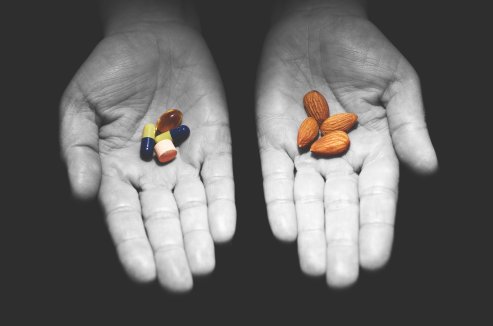
As mentioned above, the "dangers of low carb diets" are false beliefs and unsubstantiated fears communicated by people who have a limited understanding of how a ketogenic diet plan works, or by people with financial or professional reasons to maintain support for the low fat, high carb message.
For instance, since the privately owned Academy of Nutrition and Dietetics (formerly the American Dietetics Association) receives great sums of money from processed food manufacturers, they can't just suddenly start saying that a high fat, low grain diet is healthiest - they would lose all their funding from companies like Kraft Foods, Hershey's and Coca-Cola. I know that sounds harsh, but I will add that now in 2021, they seem to be coming around to the low carb idea. I've seen evidence that they are changing their message on the evils of saturated fat and cholesterol and that's a start, at least.
The more likely result of a ketogenic diet plan, once you've adapted to it, is that you will feel much better and be much healthier. One of the long list of health benefits of a ketogenic diet is that it lowers your fasting blood sugar and insulin levels, helps reverse insulin resistant conditions such as type 2 diabetes, PCOS, fatty liver and Metabolic Syndrome, cools inflammation and in turn, leads to better overall health.
If you have any lingering concerns, please remember that there is plenty of solid research showing that following a ketogenic diet plan is not detrimental to human health.
It's when you combine lots of fat and lots of carbohydrates in your diet that you get into trouble. The sugar from the carbohydrates drives up your insulin levels, and those high insulin levels cause the body to mishandle the way fats are metabolized. More fat is stored or circulates in the blood. This causes the metabolic syndrome and weight gain associated with insulin resistance and starts the health problems that should be associated with a high carb diet, not a ketogenic diet plan.
Finally, if you have questions, you can use my contact form to email me, and there are many Keto Facebook groups where you can ask questions and get helpful answers.
Resources for More Information
All of my books are available in electronic PDF, and now in paperback on Amazon!
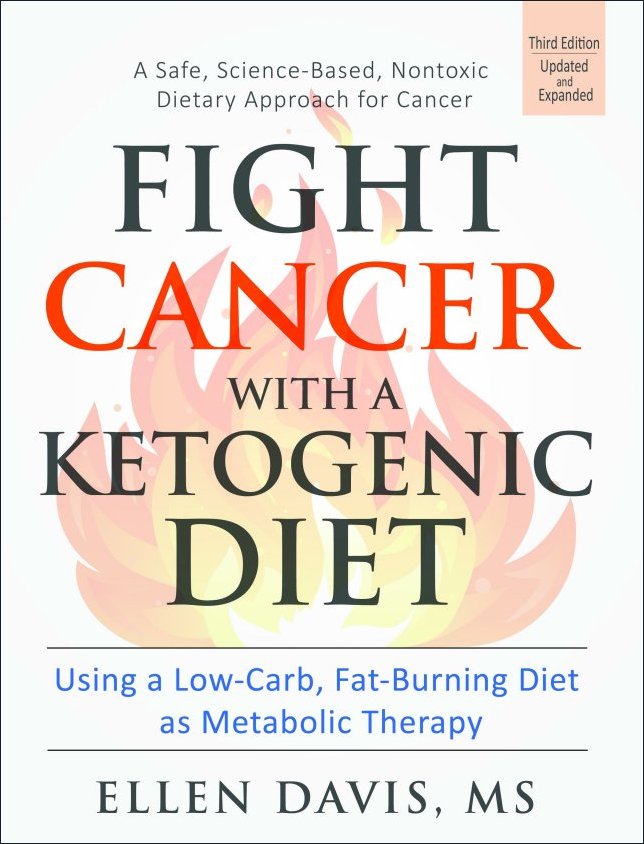 |
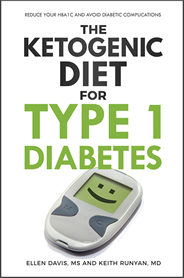 |
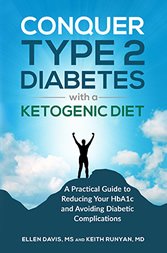 |
|
Buy paperbook on Buy paperback on Amazon Buy the e-Book via Paypal |
Buy paperback on Buy paperback on Amazon Buy the e-Book via Paypal |
Buy paperback on Buy paperback on Amazon Buy the e-Book via PayPal |
